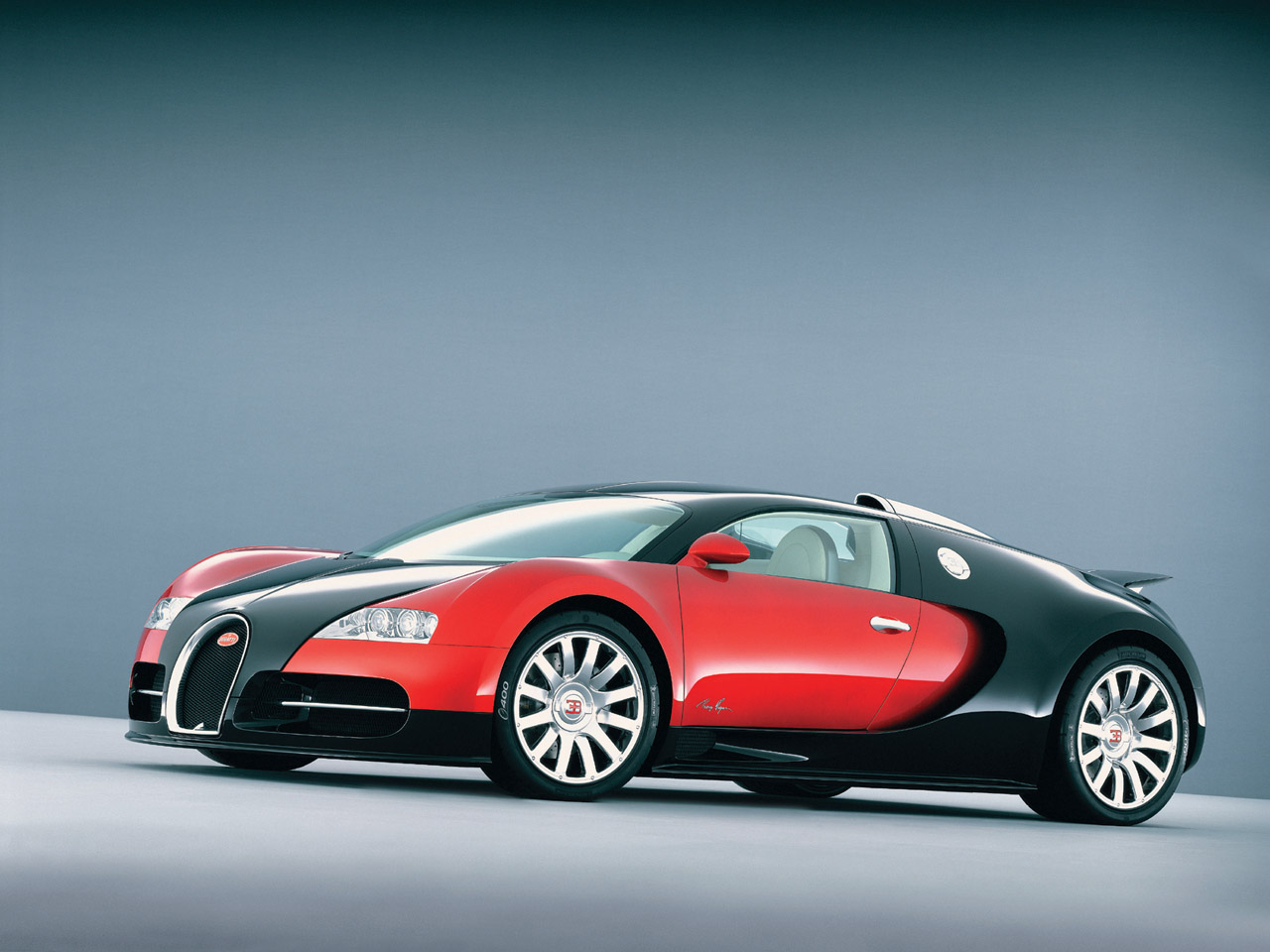The 16/4 Veyron rides on tyres featuring the new Pax system developed by Michelin. These high-speed tyres for the 400-km range have a pressure monitoring system and run-flat characteristics, so that safe handling and a remaining distance of more than 200 kilometres are assured in the event of air loss.
Compared to the version exhibited at the March 2001 Geneva Automobile Salon, the wheelbase is now 2,700 millimetres, 50mm longer than before, the extra space is used for increased cabin space.
This 16/4 Veyron also has an upgraded aerodynamics package, both to solve cooling problems and to increase the handling characteristics. The rear of the car has two air outlets not seen on the previous concept. Together with the front-end airflow, the fully panelled undertray and a new, automatically extending rear spoiler, a diffusor effect has been obtained that counteracts body lift.
The alloy-block W16 engine is made up of two exceptionally narrow V8 cylinder blocks, using the VR principle combined at an included angle of 90 degrees.
The gear shifts of the seven speed gearbox take place sequentially at paddles behind the steering wheel, and there is no clutch pedal. The double clutch transmission (DCT) shifts from one gear to the next in a maximum of 0.2 of a second. Power from the engine reaches the wheels through a permanent all-wheel drive system.
Source - Bugatti MediaAt the time of writing, in the spring of 2002, the 736 kW (1001 bhp) Bugatti EB 16·4 Veyron, although exhibited as a design study, has already reached a degree of driveline and body development that is close to series production status. The first theoretical performance figures are also available: the new 16-cylinder sports car should reach a top speed of 406 km/h and accelerate from 0 to 300 km/h in under 14 seconds.
The study exhibited at the 2002 Geneva Motor Show incorporates a large number of technological highlights. As on Formula 1 and Le Mans racing cars, the load-bearing chassis of the EB 16·4 is reinforced with carbon fibre for maximum strength and rigidity as well as minimum weight. This principle also ensures optimum passive safety for the car's occupants. The outer skin of the body is of mixed aluminium and carbon-fibre construction. The W16 turbocharged engine, which has dry sump lubrication and four continuously variable camshafts, surpasses the power output of even the latest Formula 1 engines. Power is transmitted to the wheels through a new type of sequential-shift seven-speed gearbox with twin clutches.
The EB 16·4 Veyron runs on tyres that use the new Pax system developed by Michelin. These high-speed tyres for speeds in the region of 400 km/h have a pressure monitoring system and run-flat capability, so that safe handling is maintained and the car can be driven for more than 200 kilometres in the event of pressure loss.
The dimensions of the Bugatti EB 16·4 Veyron are equally impressive: the wheelbase is 2,700 millimetres, the car's overall length 4,466 mm, its width 1,998 mm and its height only 1,206 mm.
In addition to this design study, BÚGATTI Automobiles S.A.S. is drawing attention to Bugatti's origins at the 2002 Geneva Show, by exhibiting a 16-cylinder racing engine dating from 1928. This engine documents an exciting era in automobile engineering during the early part of the 20th century: with its two Zenith carburettors and double magneto ignition, it represented the leading edge of automobile engine development in its day.Source - VW
Related Reading : Bugatti EB 16/4 Veyron History
Continue Reading >>
Similar Automakers

Recent Vehicle Additions
Performance and Specification Comparison
Related Automotive News

Bugatti Chiron Pur Sport – 'Drifting The C'

Ten Years of the Bugatti Veyron 16.4 Grand Sport Vitesse – The World's Fastest Roadster

Bugatti W16 Engine – the last of its kind

Fine-Tuning The Chiron Pur Sport On The Test Track






